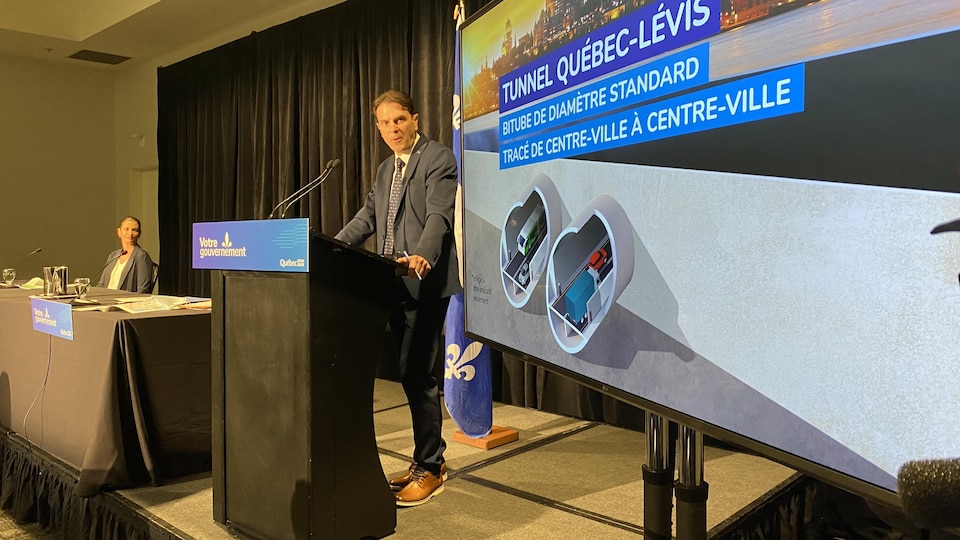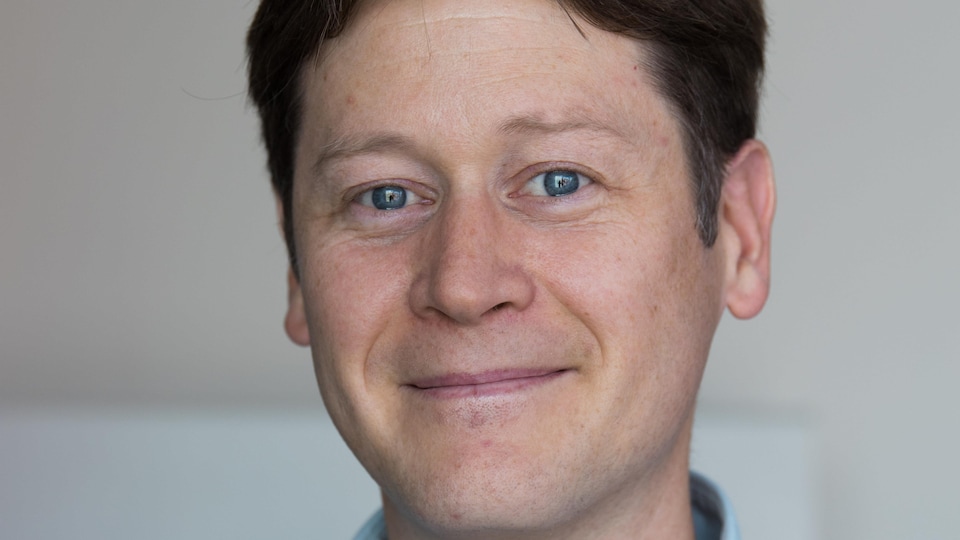“We will respect the budget,” Quebec Transportation Minister François Bonnardel promised, who presented his new version of the third link project between Quebec and Lévis, on April 14. However, he declined to reveal how much of the $ 6.5 billion is allocated for contingencies. The answer: between 10% and 35%, Radio-Canada learned.
The Ministère des Transports du Québec (MTQ) confirms that this part of the envelope, called related costsincludes several elements: reserves for risk management, inflation costs, financing costs, salary costs, etc.
This range of 10% to 35% is the same as for the first version of the project. However, because related costs are now included in a more modest envelope, the amount available for contingencies is also reduced.
In order not to interfere with the tender process, the ministry never disclosed the details of its estimates.however, the spokesperson indicated via email MTQ, Bryan Gelinas. It is impossible, therefore, to know how much is estimated only the possible overruns in cost or the totals allocated to take into account inflation, for example.
During his press conference, however, Minister Bonnardel confirmed that the risk surrounding the new two-tunnel project had been “carefully evaluated” and that it was lower than in the first draft.
However, the maximum limit of 35% for additional costs seems to be Pretty small in the eyes of engineer Bruno Massicotte, professor in the Department of Civil, Geological and Mining Engineering at Polytechnique Montréal.
Given himself conducting the study in 2016 for a tunnel between Quebec and Lévis that would pass through the western end of the Île d’Orléans, the expert recalled that the less advanced a project is, the greater the loss of certainty in the financial plan.
An estimated $ 6.5 billion appears to him as a price on the floorhe admits.
” For this to be possible, the preliminary work, the drilling work and all that must be at a very advanced stage, perhaps more advanced than the information transmitted to the public. “
Some unknown elements
The third link, which is in the draft phase, still contains many unknown elements. For example, the diameter of the two tunnels now planned by MTQ has not yet been confirmed.
It is now a question of a diameter oscillating between 12 and 15 meters. However, between these two dimensions, there may be a difference of approximately 30% in the final amount of work, according to Professor Massicotte.
In addition, land characterization, which began in 2019, is incomplete. Deepwater marine drilling will not begin until this summer.
The nature of the soil is however the biggest source of cost variation in a tunnel project, according to Professor Massicotte, because of all the surprises that can arise during excavation.
He also pointed out that the ground was not the same on all 8.3 -kilometer routes planned for the third link. He also recalls that experts feared having a deep cannon in the river basement.
” Significant change in the nature of the land along the route. This affects the choice of tunnel boring machine and it also leads to construction methods that differ from one place to another. “
All this led Professor Massicotte to say that when the calls for tenders came, in a few years, we would have a clear idea of the real costs associated with building the third link. , with delivery scheduled for 2032.
View data
This is also the opinion of Jean-Philippe Meloche, professor in the School of Urban Planning and Landscape Architecture at the University of Montreal. This remains too rough as an estimatehe said about the 6.5 billion dollar envelope.
In 2032, we will no longer speak to the same dollar. We will no longer speak of the same discount rates. We will not discuss the conditions today. So there is a good chance that the bill we will pay in 2032 will not[s] $ 6.5 billionhe says.
” It is possible that when calls for tenders come, we will know that no company in the world can afford to do that within the designated envelope. “
Professor Meloche also wonders what the data is MTQ hoping to justify a project of that size. I think it would be absolutely certain for the Ministry of Transportation to disclose studies that show us that we have benefits of up to $ 6.5 billion.he says.
At this point, the MTQ maintained that many evaluations have been conducted in this direction as part of the opportunity study [et que] these reviews will be developed and made public no later than the confirmation of the business case.
In his press conference, Minister Bonnardel mentioned the year 2025 for filing this business file.
Source: Radio-Canada

